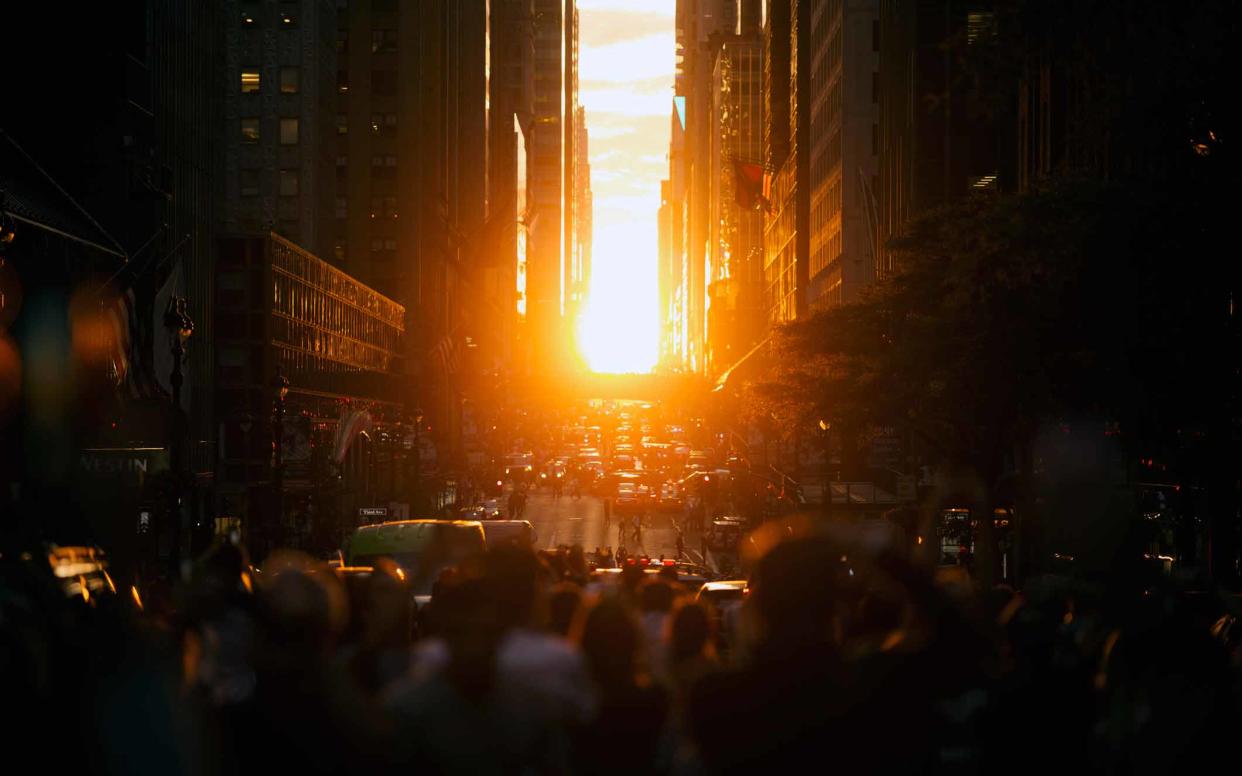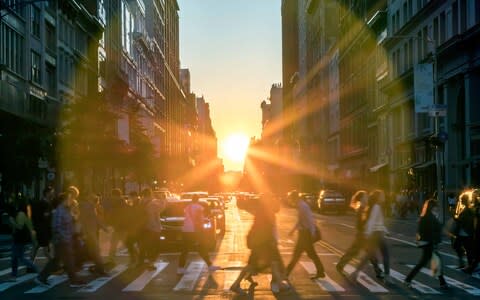Manhattanhenge is coming: what is it, and how can I see it?

Just when you reckon you have a grasp on all of the modern day's portmanteaus another rears its head. Introducing 'Manhattanhenge'.
Otherwise known as the Manhattan Solstice, Manhattanhenge (where Manhattan, New York City’s central isle, and Stonehenge, a prehistoric circle of rock slabs in Wiltshire, meet) occurs twice a year and is the name for when the setting sun aligns with the east-west streets of the city's street grid system. At Stonehenge, the sun on the solstice sets in alignment with the stones.
This happens at either side of the summer solstice, when the sun reaches its greatest height in the sky, marking the longest day of the year: so usually around late May and mid-July. The first has already been and gone - on May 29 and 30 - but the second awaits.
When: July 12 at 8.20pm EDT and July 13 at 8.21pm EDT
Where: Manhattan, New York City
How to capture it: with your smartphone and a couple of filters
It also has a slightly different "half sun" dates, when only a solar semi-circle appears on the horizon, a day earlier, and then a day later, which is the July 13 showing.

Where is the best place to see Manhattanhenge?
"For the best effect, position yourself as far east in Manhattan as possible" says Neil deGrasse Tyson, an astrophysicist at the American Museum of Natural History and native New Yorker, who coined the Manhattanhenge term in 2002.
"But ensure that when you look west across the avenues you can still see New Jersey. Clear cross streets include 14th, 23rd, 34th. 42nd, 57th, and several streets adjacent to them. The Empire State building and the Chrysler building render 34th street and 42nd streets especially striking vistas."
Google has even done a handy map.
Why does Manhattanhenge happen?
The streets of Manhattan, in accordance with the Commissioners’ Plan of 1811, are set at 29 degrees from true east to west, hence Manhattanhenge doesn’t fall on the actual solstice dates.
So when the setting sun lines up at 29 degrees, that is 29 degrees off due west, it is in perfect view of the length of each Manhattan street crossing the island.
Though the spectacle has existed ever since the streets of New York City came into being, it has only gained traction as an occasion in the past few years, with images of a burning sun, framed by skyscrapers, dazzling the length of a thoroughfare becoming hard currency on social media sites.
It is also used as a perfect excuse to have a party or picnic, whether in Central Park, West Village or Bryant Park. See more ideas from our guide of what to do in New York.

It is worth noting that the time when the rising sun aligns with Manhattan’s streets, around December 5 and January 8, on either side of the winter solstice, is also known as Manhattanhenge but nobody seems that fussed about it. Poor winter.
It is also worth noting that this phenomenon happens anywhere in the world where the streets are laid out in a grid and have an unobstructed view of the horizon - Baltimore, Toronto and Montreal have similar events.
The Massachusetts Institute of Technology (MIT), in Boston, has a "henge" event, too, where the sun aligns with a corridor in its central campus.


